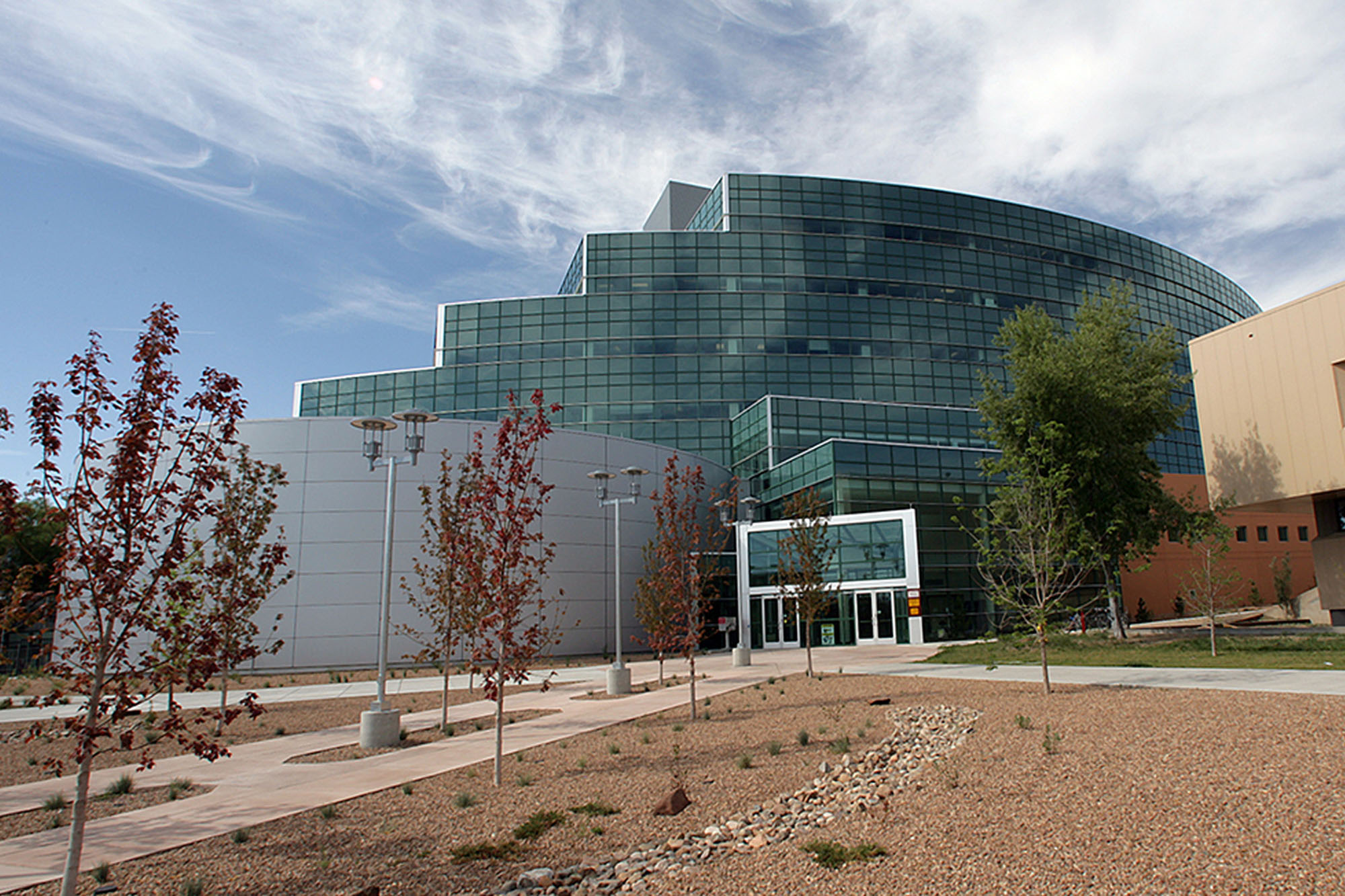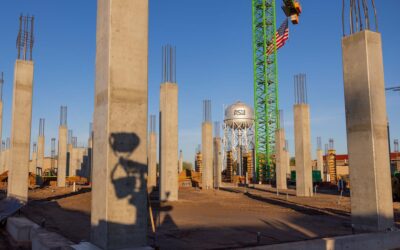Government lab joins forces with ASU to boost manufacturing power
By Sona Srinarayana
July 11, 2023

The Los Alamos National Laboratory, or LANL, in Los Alamos, New Mexico, is home to some of the world’s largest supercomputers, capable of doing simulations at scales large enough to solve national security challenges. To expand the computers’ capabilities, LANL will tap into the expertise of faculty and students in the Ira A. Fulton Schools of Engineering at Arizona State University through a new multifaceted partnership.
LANL’s mission to integrate research and development solutions and community engagement into their practices has led to a three-year, $3 million collaboration with the Fulton Schools to boost LANL’s manufacturing capabilities.
“At the end of the Cold War, the nation’s abilities to manufacture the key components in nuclear machinery were shut down,” says Steve Schrieber, a technical director in LANL’s Science, Technology and Engineering Office within the Weapons Production directorate. “Now, we at Los Alamos have been tasked with resurrecting manufacturing on a production scale. Because that’s not something we’ve historically done, we are looking forward to interacting with the Fulton Schools where there is a focus on manufacturing.”
LANL, one of 16 federally funded research and development centers, will collaborate with the School of Manufacturing Systems and Networks and the School of Computing and Augmented Intelligence, both part of the Fulton Schools, to advance the lab’s systems and processes to keep up with demand in three key areas of its robust plutonium facility: risk assessment modeling, virtual workforce training and recruitment efforts.
“We are searching for new technologies to integrate into our operations,” says Bob Putnam, director for the Technical Applications Office and chief production scientist at LANL’s plutonium facility. “From technologies in equipment to technologies in personnel training to technologies in operations, we need all of it, and ASU met our criteria.”
After meeting with LANL last fall, Tim Beatty, the Fulton Schools director of business development, says “it became clear that the Fulton Schools’ scale and breadth of engineering capabilities and curriculum presented a unique alignment with LANL’s long-term goals,” adding that “once LANL saw the various connections and the caliber of students and faculty we had to offer, the agreement came together very quickly.”
Turning risks into rewards
Assessing the potential for challenges that may affect a project can be difficult in LANL’s highly regulated environment, but it’s necessary to increase productivity and advance the level of the work.
“We work in a highly constrained environment, so the space in which we can get work done is sometimes small or nonexistent,” says Putnam, who was mentored by ASU Regents Professor Alex Navrotsky when he was a student at Princeton University. “We are being tasked with figuring out how to quantify risks in projects so that a risk-benefit assessment can be made.”
Binil Starly, director of the School of Manufacturing Systems and Networks, says he looks forward to seeing his faculty and students address LANL’s risk challenges by simulating the risks in ASU labs.
“These models can then be implemented into LANL’s manufacturing practices,” Starly says.
Putnam says he and his team look forward to formulating solutions to enable optimal productivity that will enhance the lab’s operations in this area through collaboration with faculty and students who have experience working in challenging environments.
Tech-forward workforce training
LANL expects to expand its workforce by 1,500 personnel each year for the next decade to keep up with growing demand. Putnam says training a workforce at this scale and in challenging environments in which it can take up to three years before an employee is fully independent, has empowered LANL to integrate new technologies into its workforce training modules to efficiently accommodate the expansion.
“The exploration of initiatives and functionalities such as digital twinning, training simulations, online and remote learning for hands-on functions and scaling solutions for individual learners, are just some of the exciting contributions this collaboration can achieve,” says April Martinez, a training manager at LANL who manages new employee training and workforce development.
The implementation of digital twinning technology and augmented reality and virtual reality, or AR and VR, “can allow new workers to experience actual LANL environments without stepping foot into the facility,” she says.
Fulton Schools faculty with experience in these areas will apply their knowledge to address the workforce training challenges and implement approaches in which they have already seen successes in their research collaborations with industry, such as development of “physics-based virtual reality tools to train personnel in hard-to-access manufacturing spaces,” Starly says.
“Our work is very high cost, low quantity and high quality, so the consequence for error can reach into the tens and even hundreds of millions of dollars,” Putnam says. “Offering virtual training in this manner will alleviate errors and set our workforce up for success.”
Boosting recruitment and career-readiness
To benefit from those with manufacturing and engineering talent and to conceptualize creative approaches to some of LANL’s challenges, the laboratory plans to recruit at Fulton Schools career fairs and sponsor three to five capstone projects each year for the duration of the partnership.
The scope of these capstone projects is yet to be determined, but will provide opportunities for engineering seniors to work on real industry challenges, preparing them for future careers. Schreiber says that if any capstone projects spin off into additional subprojects, LANL will financially support those endeavors.
“Capstone projects allow students the opportunity to try us out as well to see if we are a good career fit for them,” Schreiber says.
LANL has already hired three Fulton Schools graduates, and there’s potential for two more hires to be made in the coming months. Schreiber says the Fulton Schools’ hands-on approach is one of the main reasons the laboratory is attracted to students participating in capstone projects.
“We realize that currently we don’t have the correct or large enough workforce, but the workforce we are looking for is the one the Fulton Schools is training,” Schreiber says. “Hiring ASU students with expertise in the disciplines we need is the goal.”
Putnam expresses a similar outlook.
“These various areas of synergy between LANL and the Fulton Schools will support a mutual partnership,” he says, “and we look forward to seeing the benefits of this exciting collaboration.”
Fulton
connections
Alexandra Navrotsky
Regents Professor
School for Engineering of Matter, Transport and Energy
Binil Starly
School Director and Professor
School of Manufacturing Systems and Networks
Related Stories
Stabenfeldt elected president of Society For Biomaterials
ASU biomedical engineering professor Sarah Stabenfeldt has been elected president of the Society for Biomaterials
ISTB12 to be major economic boost in region
ASU’s 2025 manufacturing engineering building will be “a showcase of what manufacturing is,” with high-tech labs, classrooms, and makerspaces.
Celebrating an excellent microelectronics professor
ASU researcher Sule Ozev received the Joseph C. Palais Distinguished Faculty Scholar Award for her innovative research, teaching and service to the ASU community
ASU creates hub of coursework for careers in booming microelectronics industry
ASU’s new Microelectronics Workforce Development Hub offers more than 70 courses for all ages of people wanting to train for a new career.


